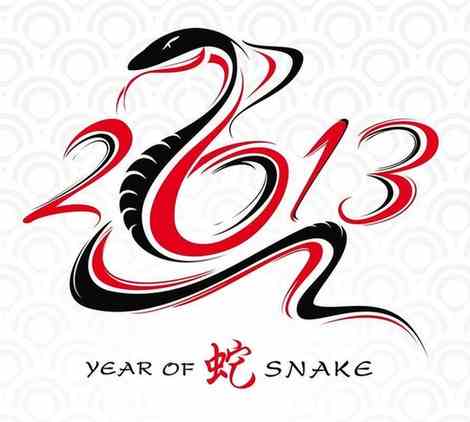作者:王逢鑫

今年是蛇年。蛇與龍一樣,都屬于十二生肖。幼時,聽老人講“屬蛇”就是“屬小龍”。龍代表剛猛,蛇象征柔韌,一個剛,一個柔。中國人講究剛柔并濟,以柔克剛。蛇是現實世界的生靈,而龍是模擬身體細長的蛇而想象出來的神話動物。英語表示“蛇”的詞有snake(蛇)、serpent(巨蛇)、viper(蝰蛇)、 cobra(眼鏡蛇)等,例如:
1. A snake is a crawling animal with a very long thin body and no legs.蛇是一種身體非常細長而無足的爬行動物。
在西方文化中,蛇常使人聯想到陰險、兇惡和奸詐。《圣經·舊約》記載了 the Serpent in Eden 的故事。伊甸園之蛇誘惑夏娃(Eve)和亞當(Adam)偷吃禁果,唆使他們犯了原罪,使他們被逐出伊甸園。
snake/viper in one’s/the bosom 這個成語源自古希臘伊索寓言(Aesop’s fable)。一個農夫憐憫凍僵的毒蛇,將其放入懷中,毒蛇蘇醒后咬死了農夫。 snake in one’s/the bosom 的字面意思是“懷中的蛇”,比喻“忘恩負義的人”。 to cherish/nourish/nurse/rear/warm a snake/viper/serpent in one’s bosom 的字面意思是“把蛇揣在懷中”,其比喻意義是 to have a dangerous or ungrateful person close to oneself 或 to befriend a person who proves to be treacherous,相當于“護惡養奸”或“養虎遺患”,例如:
2. Never cherish a serpent in your bosom. 永遠不要施惠于忘恩負義之徒。
snake in the grass 這個成語源自古羅馬詩人維吉爾(Virgil)的詩作《牧歌》,其中有一句相當于英語的 a snake that lurks in the grass,即“暗藏在草叢中的蛇”。英語成語 snake in the grass 比喻 a person who pretends to be your friend but who cannot be trusted because he is secretly damaging you at the same time,或 a treacherous friend who is actually your secret enemy,即“陰險小人”,例如:
3. He is a real snake in the grass. Don’t believe anything he says. 他是個貨真價實的陰險小人。他說什么都不要相信。
漢語中有些帶“蛇”的成語,如蛇蝎心腸(have a heart as malicious as snakes and scorpions)、毒如蛇蝎(to be as venomous as snakes and scorpions)、牛鬼蛇神(字面意思 ox-headed ghosts and snake-bodied demons,比喻意義 all sorts of bad characters, wicked people of all descriptions)、地頭蛇(字面意思 snake in its old haunt,比喻意義 local villain, local bully)等,也具有陰險兇惡的含義,例如:
4. 強龍難壓地頭蛇。 1) Even a mighty dragon finds it hard to control a snake in its old haunt.(字面意思) 2) A powerful outsider can hardly overwhelm a local bully.(比喻意義)
漢語另有些帶“蛇”的成語則與陰險兇惡無關:虎頭蛇尾(字面意思 with a tiger's head but a snake’s tail,比喻意義 fine start and poor finish),比喻先緊后松、有始無終的鮮明反差;人心不足蛇吞象(to be greedy like a snake that tries to swallow an elephant),比喻人心的貪婪;畫蛇添足(字面意思 to draw a snake and add feet to it,比喻意義 to ruin the effect by adding sth. superfluous, to do sth. entirely unnecessary),這里“蛇足”(字面意思 foot added to a snake,比喻意義 sth. superfluous)比喻多余的事物;蛇影杯弓(字面意思 to mistake the reflection of a bow in the cup for a snake,比喻意義 to be extremely nervous or suspicious),比喻緊張猜疑的心情。例句如:
5. 我們無論做什么工作,都不能虎頭蛇尾。 No matter what we do, we should not let the work tail off once it gets started.
6. 這個戲的結局實在是畫蛇添足。 The ending of the play has only ruined its effect.
不過,蛇并不總是負面的。中國民間故事和傳統戲曲《白蛇傳》(A Tale of the White Snake)塑造了白蛇(the White Snake)和青蛇(the Green Snake)兩個動人的正面藝術形象。
埃及和印度等國家具有與蛇相關的文化,耍蛇(snake charming)是一種傳統的民間技藝,例如:
7. The art of snake charming is widely believed to have started in ancient Egypt. 人們普遍認為耍蛇術起源于古埃及。
8. Snake charming is the practice of pretending to hypnotize a snake by playing an instrument. 耍蛇是通過演奏樂器假裝給蛇催眠的活動。
9. In India, one can easily find a snake charmer performing in the market or on the street. The exotic sight of a mystic man with a basket across his shoulder has been a century’s old image of India. 在印度,人們很容易在市場或街道上發現耍蛇者在表演。神秘人肩背竹簍的異域景象是印度一個世紀以來的古老標志。
我國有道著名的粵菜,名曰“龍虎斗”,其主料是蛇肉和貍貓肉,例如:
10. The famous dish in Guangdong Province, called “the Fight Between the Dragon and the Tiger” is actually braised snake and leopard cat. 這道叫作“龍虎斗”的廣東名菜實際上是燉蛇肉和貍貓肉。
相關閱讀
(來源:《英語世界》2013年第2期,編輯 Helen)